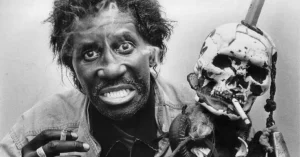The Cars: Where New Wave Meets Classic Rock Precision
The Cars. I. Formation and Background
The Cars formed in Boston in 1976, bringing together musicians with backgrounds in art rock, power pop, and punk. The classic lineup included:
- Ric Ocasek – Rhythm guitar, lead vocals, principal songwriter
- Benjamin Orr – Bass, lead vocals
- Elliot Easton – Lead guitar
- Greg Hawkes – Keyboards, synthesizers
- David Robinson – Drums (formerly of The Modern Lovers)
They fused guitar-driven rock with synth textures and detached vocal delivery, helping define the early American new wave movement.
The Cars. II. Debut Album and Breakthrough (The Cars, 1978)
Their self-titled debut was an instant classic, produced by Roy Thomas Baker (of Queen fame). The album stayed on the charts for 139 weeks and introduced their signature blend of tight pop structures, sleek production, and deadpan cool.
Key Tracks:
- “Just What I Needed” – One of rock radio’s most enduring openers
- “My Best Friend’s Girl” – Surf guitar meets synth-pop
- “Good Times Roll”
- “Bye Bye Love”
This album is often called “a greatest hits from the start”, with 5 radio staples and a massive influence on both rock and post-punk.
The Cars. III. Continued Success and Evolution (1979–1984)
✦ Candy-O (1979)
With a cover by pin-up artist Alberto Vargas, this sophomore release leaned slightly harder into rock riffs.
Highlights:
- “Let’s Go” – A slick power-pop anthem
- “It’s All I Can Do” – Sung by Orr, soft and wistful
✦ Panorama (1980)
More experimental and darker in tone. Critics were divided, but it showed the band’s willingness to push boundaries.
✦ Shake It Up (1981)
Marked a return to pop accessibility:
- “Shake It Up” – Their first Top 10 hit, danceable and radio-ready
- “Since You’re Gone” – Wry and minimalist
✦ Heartbeat City (1984)
Produced by Mutt Lange, this was their commercial peak, filled with MTV-era hits and big glossy production.
Key Tracks:
- “Drive” – A heartbreaking ballad sung by Benjamin Orr, became a massive hit
- “You Might Think” – Won the first MTV Video of the Year award
- “Magic”
- “Hello Again”
This album positioned The Cars as one of the most visually savvy and sonically modern bands of the decade.
The Cars. IV. Breakup and Legacy (1985–2000s)
After the success of Heartbeat City, tensions rose. Ric Ocasek and Benjamin Orr both pursued solo careers, and the band released Door to Door (1987), which included “You Are the Girl” but failed to maintain their earlier momentum.
They disbanded in 1988, and Benjamin Orr sadly passed away in 2000 due to pancreatic cancer.
The Cars. V. Reunion and Final Chapter
In 2010, the surviving members reunited (without Orr) and released Move Like This (2011), their first album in 24 years. It was a critically respected return, balancing nostalgia with fresh energy.
In 2018, The Cars were inducted into the Rock and Roll Hall of Fame, reuniting for a live performance in tribute to Orr.
Ric Ocasek passed away in 2019, marking the end of the band’s story — but not their influence.
VI. Legacy and Influence
The Cars are remembered for:
- Blending edgy rock with new wave gloss
- Minimalist yet catchy songwriting
- Iconic MTV videos that helped define the medium
- Influencing artists from Weezer, The Killers, and The Strokes to Phoenix and Tame Impala
Their ability to make cool music sound warm — and vice versa — remains their most defining trait.
VII. Interesting Facts
- Ric Ocasek produced albums for Weezer, No Doubt, and Bad Brains.
- “Drive” was used poignantly during Live Aid in 1985, bringing attention to the Ethiopian famine.
- Greg Hawkes’ keyboard style helped define the ’80s synth sound.
- Their music was both technically precise and emotionally detached, a hallmark of early new wave.





